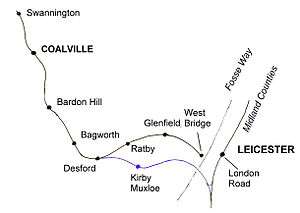Leicester to Burton upon Trent Line
| Leicester to Burton-upon-Trent | ||||||||||||||||||||||||||||||||||||||||||||||||||||||||||||||||||||||||||||||||||||||||||||||||||||||||||||||||||||||||||||||||||||||||||||||||||||||||||||||||||||||||||||||||||||||||||||||||||||||||||||||||||||||||||||||||||||||||||||||||||||||||||||||||||||||||||||||||||||||||||||||||||||||||||||||||||
|---|---|---|---|---|---|---|---|---|---|---|---|---|---|---|---|---|---|---|---|---|---|---|---|---|---|---|---|---|---|---|---|---|---|---|---|---|---|---|---|---|---|---|---|---|---|---|---|---|---|---|---|---|---|---|---|---|---|---|---|---|---|---|---|---|---|---|---|---|---|---|---|---|---|---|---|---|---|---|---|---|---|---|---|---|---|---|---|---|---|---|---|---|---|---|---|---|---|---|---|---|---|---|---|---|---|---|---|---|---|---|---|---|---|---|---|---|---|---|---|---|---|---|---|---|---|---|---|---|---|---|---|---|---|---|---|---|---|---|---|---|---|---|---|---|---|---|---|---|---|---|---|---|---|---|---|---|---|---|---|---|---|---|---|---|---|---|---|---|---|---|---|---|---|---|---|---|---|---|---|---|---|---|---|---|---|---|---|---|---|---|---|---|---|---|---|---|---|---|---|---|---|---|---|---|---|---|---|---|---|---|---|---|---|---|---|---|---|---|---|---|---|---|---|---|---|---|---|---|---|---|---|---|---|---|---|---|---|---|---|---|---|---|---|---|---|---|---|---|---|---|---|---|---|---|---|---|---|---|---|---|---|---|---|---|---|---|---|---|---|---|---|---|---|---|---|---|---|---|---|---|---|---|---|---|---|---|---|---|---|---|---|---|---|---|---|---|---|---|---|---|---|---|---|---|---|---|
|
Site of former Coalville Town station | ||||||||||||||||||||||||||||||||||||||||||||||||||||||||||||||||||||||||||||||||||||||||||||||||||||||||||||||||||||||||||||||||||||||||||||||||||||||||||||||||||||||||||||||||||||||||||||||||||||||||||||||||||||||||||||||||||||||||||||||||||||||||||||||||||||||||||||||||||||||||||||||||||||||||||||||||||
| Overview | ||||||||||||||||||||||||||||||||||||||||||||||||||||||||||||||||||||||||||||||||||||||||||||||||||||||||||||||||||||||||||||||||||||||||||||||||||||||||||||||||||||||||||||||||||||||||||||||||||||||||||||||||||||||||||||||||||||||||||||||||||||||||||||||||||||||||||||||||||||||||||||||||||||||||||||||||||
| Type | Freight Only Line | |||||||||||||||||||||||||||||||||||||||||||||||||||||||||||||||||||||||||||||||||||||||||||||||||||||||||||||||||||||||||||||||||||||||||||||||||||||||||||||||||||||||||||||||||||||||||||||||||||||||||||||||||||||||||||||||||||||||||||||||||||||||||||||||||||||||||||||||||||||||||||||||||||||||||||||||||
| System | National Rail | |||||||||||||||||||||||||||||||||||||||||||||||||||||||||||||||||||||||||||||||||||||||||||||||||||||||||||||||||||||||||||||||||||||||||||||||||||||||||||||||||||||||||||||||||||||||||||||||||||||||||||||||||||||||||||||||||||||||||||||||||||||||||||||||||||||||||||||||||||||||||||||||||||||||||||||||||
| Status | Operational | |||||||||||||||||||||||||||||||||||||||||||||||||||||||||||||||||||||||||||||||||||||||||||||||||||||||||||||||||||||||||||||||||||||||||||||||||||||||||||||||||||||||||||||||||||||||||||||||||||||||||||||||||||||||||||||||||||||||||||||||||||||||||||||||||||||||||||||||||||||||||||||||||||||||||||||||||
| Locale | East Midlands | |||||||||||||||||||||||||||||||||||||||||||||||||||||||||||||||||||||||||||||||||||||||||||||||||||||||||||||||||||||||||||||||||||||||||||||||||||||||||||||||||||||||||||||||||||||||||||||||||||||||||||||||||||||||||||||||||||||||||||||||||||||||||||||||||||||||||||||||||||||||||||||||||||||||||||||||||
| Termini |
Leicester Burton-upon-Trent | |||||||||||||||||||||||||||||||||||||||||||||||||||||||||||||||||||||||||||||||||||||||||||||||||||||||||||||||||||||||||||||||||||||||||||||||||||||||||||||||||||||||||||||||||||||||||||||||||||||||||||||||||||||||||||||||||||||||||||||||||||||||||||||||||||||||||||||||||||||||||||||||||||||||||||||||||
| Stations | None | |||||||||||||||||||||||||||||||||||||||||||||||||||||||||||||||||||||||||||||||||||||||||||||||||||||||||||||||||||||||||||||||||||||||||||||||||||||||||||||||||||||||||||||||||||||||||||||||||||||||||||||||||||||||||||||||||||||||||||||||||||||||||||||||||||||||||||||||||||||||||||||||||||||||||||||||||
| Daily ridership | 0 | |||||||||||||||||||||||||||||||||||||||||||||||||||||||||||||||||||||||||||||||||||||||||||||||||||||||||||||||||||||||||||||||||||||||||||||||||||||||||||||||||||||||||||||||||||||||||||||||||||||||||||||||||||||||||||||||||||||||||||||||||||||||||||||||||||||||||||||||||||||||||||||||||||||||||||||||||
| Operation | ||||||||||||||||||||||||||||||||||||||||||||||||||||||||||||||||||||||||||||||||||||||||||||||||||||||||||||||||||||||||||||||||||||||||||||||||||||||||||||||||||||||||||||||||||||||||||||||||||||||||||||||||||||||||||||||||||||||||||||||||||||||||||||||||||||||||||||||||||||||||||||||||||||||||||||||||||
| Opened | 1832-1849 | |||||||||||||||||||||||||||||||||||||||||||||||||||||||||||||||||||||||||||||||||||||||||||||||||||||||||||||||||||||||||||||||||||||||||||||||||||||||||||||||||||||||||||||||||||||||||||||||||||||||||||||||||||||||||||||||||||||||||||||||||||||||||||||||||||||||||||||||||||||||||||||||||||||||||||||||||
| Closed | 1964 to passenger services | |||||||||||||||||||||||||||||||||||||||||||||||||||||||||||||||||||||||||||||||||||||||||||||||||||||||||||||||||||||||||||||||||||||||||||||||||||||||||||||||||||||||||||||||||||||||||||||||||||||||||||||||||||||||||||||||||||||||||||||||||||||||||||||||||||||||||||||||||||||||||||||||||||||||||||||||||
| Owner | Network Rail | |||||||||||||||||||||||||||||||||||||||||||||||||||||||||||||||||||||||||||||||||||||||||||||||||||||||||||||||||||||||||||||||||||||||||||||||||||||||||||||||||||||||||||||||||||||||||||||||||||||||||||||||||||||||||||||||||||||||||||||||||||||||||||||||||||||||||||||||||||||||||||||||||||||||||||||||||
| Technical | ||||||||||||||||||||||||||||||||||||||||||||||||||||||||||||||||||||||||||||||||||||||||||||||||||||||||||||||||||||||||||||||||||||||||||||||||||||||||||||||||||||||||||||||||||||||||||||||||||||||||||||||||||||||||||||||||||||||||||||||||||||||||||||||||||||||||||||||||||||||||||||||||||||||||||||||||||
| Number of tracks | Single and Double | |||||||||||||||||||||||||||||||||||||||||||||||||||||||||||||||||||||||||||||||||||||||||||||||||||||||||||||||||||||||||||||||||||||||||||||||||||||||||||||||||||||||||||||||||||||||||||||||||||||||||||||||||||||||||||||||||||||||||||||||||||||||||||||||||||||||||||||||||||||||||||||||||||||||||||||||||
| Track gauge | 4 ft 8 1⁄2 in (1,435 mm) | |||||||||||||||||||||||||||||||||||||||||||||||||||||||||||||||||||||||||||||||||||||||||||||||||||||||||||||||||||||||||||||||||||||||||||||||||||||||||||||||||||||||||||||||||||||||||||||||||||||||||||||||||||||||||||||||||||||||||||||||||||||||||||||||||||||||||||||||||||||||||||||||||||||||||||||||||
| ||||||||||||||||||||||||||||||||||||||||||||||||||||||||||||||||||||||||||||||||||||||||||||||||||||||||||||||||||||||||||||||||||||||||||||||||||||||||||||||||||||||||||||||||||||||||||||||||||||||||||||||||||||||||||||||||||||||||||||||||||||||||||||||||||||||||||||||||||||||||||||||||||||||||||||||||||

The Leicester to Burton-upon-Trent Line is a freight-only railway line in England linking the Midland Main Line south of Leicester to the Cross Country Route at Burton-on-Trent. The line closed to passengers in the 1960s, since when various proposals have been made to reopen it.
History
The first part of the line opened in 1832 as the Leicester and Swannington Railway, which carried the products of collieries and quarries along the route to Leicester and the River Soar. The Midland Railway took over the line in 1845 and opened an extension in 1848 from a junction west of Coalville Town to join the rest of the Midland's system at Leicester Junction just south of Burton-on-Trent. This bypassed the Swannington Incline, which had a steep 1 in 17 gradient and was worked by a stationary steam engine.
In 1849 the Midland opened a new line from a junction east of Desford to Knighton Junction on the Midland Main Line south of Leicester, thus bypassing the narrow Glenfield Tunnel and completing a route between Leicester and Burton that could carry trains built to the Midland's standard loading gauge.
Most passenger trains were taken over by diesel units from 14 April 1958, taking about 66 minutes from Leicester to Burton.[1]
Incline
The Midland diverted another section of the line from its original Leicester and Swannington alignment, between Merry Lees and Bardon Hill. The new alignment bypassed the 1 in 29 Bagworth incline that had been worked by a stationary engine, so that locomotives could now haul trains over the entire route between Leicester and Burton.
Freight
Collieries at Ellistown, Nailstone, Ibstock, Moira, Gresley, Swadlincote, Woodville, Netherseal and Bardon provided mainly coal. The massive power station at Drakelow just outside Burton was a major consumer of coal from these collieries. More recently roadstone, gravel and granite have become the norm. Railway operations around these locations are covered in detail in Anthony Gregory's Life on the Leicester Line, an autobiographical account of his experiences as a freight loco driver in the 1980s and 1990s.[2]
Stations
Coalville Town was the busiest stop on the line and had collieries at Whitwick and Snibston. A less busy but more fashionable stop was Ashby de la Zouch, an historic spa town with connections to Lord Hastings.
In 1851 the Midland built branches from the line to Swadlincote[3] and Wooden Box.[4] In 1868 Wooden Box was renamed Woodville and in 1883–84 the Midland built an extension to the Swadlincote branch to Woodville,[3] which included digging the 307 yards (281 m)[5] Woodville tunnel. The two branches thus became the Swadlincote Loop.[3]
Future

As of 2015 the line sees regular stone trains from the quarries at Stud Farm (near Markfield) and Bardon Hill.[6] At the Leicester end of the line, Knighton North Junction has been dismantled and the former course of the line to the junction has been sold and turned into an industrial estate. The line's remaining connection with the Midland Main Line is Knighton South Junction, which faces southwards, away from Leicester railway station. Trains between Leicester and the line therefore have to reverse directions at the junction to use the line.
Nevertheless, in the 1990s BR planned to restore passenger services to the Leicester to Burton upon Trent Line as the second phase of its Ivanhoe Line project. However, after the privatisation of British Rail in 1995 this phase of the project was discontinued. In 2009 the Association of Train Operating Companies published a £49 million proposal (Connecting Communities: Expanding Access to the Rail Network) to restore passenger services to the line that would include reopening stations at Kirby Muxloe, Bagworth and Ellistown, Coalville Town, Ashby de la Zouch, Moira and Gresley (for Swadlincote).[7] There is also some support in the Leicester area for the line to have new stations to serve Leicester City F.C.'s King Power Stadium and the suburb of Braunstone.
See also
References
| Wikimedia Commons has media related to Leicester to Burton upon Trent Line. |
- ↑ Railway Magazine June 1958 p. 432
- ↑ Gregory, Anthony, Life on the Leicester Line, Burton, 2003
- 1 2 3 Baumgartner, 1996, Chapter 2
- ↑ Baumgartner, 1996, Chapter 1
- ↑ Deaves, Phil (5 October 2011). "Locations beginning Q–Z". Railway Tunnel Lengths. Phil Deaves.
- ↑ "Realtime Trains, advanced search at Bagworth Junction".
- ↑ "Connecting Communities - expanding access to the rail network" (PDF). London: Association of Train Operating Companies. June 2009. p. 19. Archived from the original (pdf) on 29 July 2013. Retrieved 20 February 2015.
- Baumgartner, Peter (1996). Memories of 'The Swad Loop' and Other Railways in the South Derbyshire area. Swadlincote: Dedicated Solutions.
- Stretton, John (2005). No 47: Leicestershire. British Railways Past and Present. Kettering: Silver Link Publishing Ltd. ISBN 1-85895-198-4.
- Twells, H.N. (1985). A Pictorial Record of the Leicester and Burton Branch Railway. Burton-upon-Trent: Trent Valley Publications. ISBN 0-948131-04-7.
- Gregory, Anthony. (2003). Life on the Leicester Line. Burton-upon-Trent: P-Way Publications. ISBN 0-9543586-0-0.



